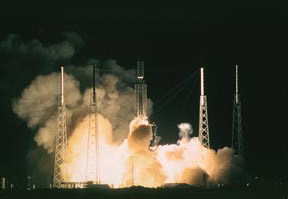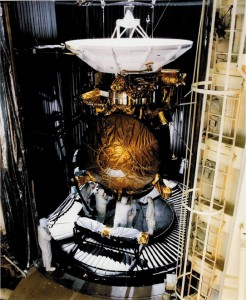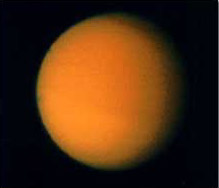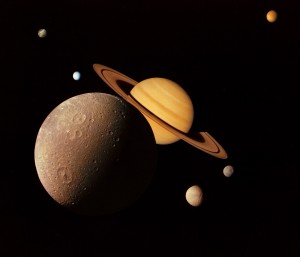Mission

On 15 October 1997, a two-story-tall robotic spacecraft launched from the Cape Canaveral Air Force Station began a journey of many years to reach and explore the exciting realm of Saturn, the most distant planet that can easily be seen by the unaided human eye. In addition to Saturn’s interesting atmosphere and interior, its vast system contains the most spectacular of the four planetary ring systems, numerous icy satellites with a variety of unique surface features, a huge magnetosphere teeming with charged particles that interact with the rings and moons, and the intriguing moon Titan, which is slightly larger than the planet Mercury, and whose hazy atmosphere is denser than that of Earth.
The Cassini-Huygens Mission to Saturn and Titan was an international venture involving the National Aeronautics and Space Administration (NASA),the European Space Agency (ESA), the Italian Space Agency (ASI), and several separate European academic and industrial partners. The mission was managed for NASA by the Jet Propulsion Laboratory. The spacecraft carried a sophisticated complement of scientific sensors – including the Ultraviolet Imaging Spectrograph (UVIS), built at LASP – to support 27 different investigations to probe the mysteries of the Saturn system. The large spacecraft consisted of an orbiter and ESA’s Huygens Titan probe. The orbiter mass at launch was nearly 5300 kg, over half of which was propellant for trajectory control. The mass of the Titan probe (2.7 m diameter) was roughly 350 kg.
The purpose of the mission was to perform close-up studies of Saturn, its rings, moons, and magnetic environment. Saturn’s largest moon, Titan, was a target of special interest because of atmospheric and perhaps surface characteristics it shares with early Earth. The instrument-laden Huygens probe descended via parachute to Titan’s surface to directly sample the atmosphere and provided our first view of its surface.
The mission was named in honor of the seventeenth-century, French-Italian astronomer Jean Dominique Cassini, who discovered the prominent gap in Saturn’s main rings, as well as the icy moons Iapetus, Rhea, Dione, and Tethys. The ESA Titan probe was named in honor of the Dutch scientist Christiaan Huygens, who discovered Titan in 1655, followed in 1659 by his announcement that the strange Saturn “moons” seen by Galileo in 1610 were actually a ring system surrounding the planet. Huygens was also famous for his invention of the pendulum clock, the first accurate timekeeping device.
The benefits derived from the Cassini mission are significant. Aside from the rewards of international cooperation and the excitement of the discoveries that were made, new technology features included powerful new computer chips, solid-state recorders, gyroscopes with no moving parts, and solid-state power switches. As Cassini transmited its findings from Saturn, the results inspired young and old alike to learn more about science and contemplate issues ranging from the origin of the solar system to the beginning of life on Earth.




